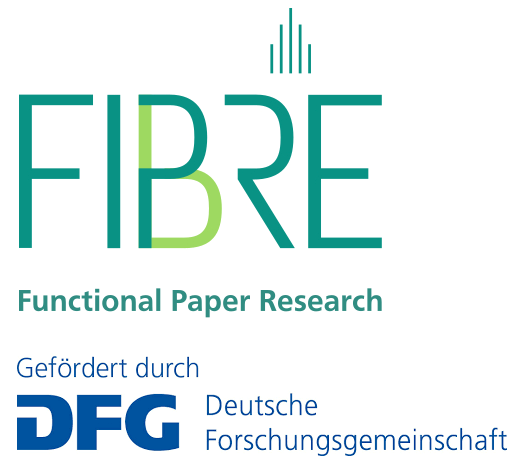Pseudomorphic Conversion of Cellulose-based Paper to Functionalized Ceramic Papers
Within the applied project, the pore space of cellulose-based paper materials is used for in-situ production of functional ceramic papers with hierarchical porosity and morphology. One of the main objectives is the pseudomorphic conversion of morphological and topological features of pulp-based paper to ceramic systems by utilization of suitable polymer-based single-source precursors (SSPs). In addition, the morphology of the cellulose paper should be equipped with in-situ grown 1D nanostructures affecting the properties of the ceramic paper such as pore structure, high temperature stability, or flexibility.
For the production of ceramic papers, pulp papers are first surface-modified via condensation reactions with metal-containing preceramic polymers and, in a further thermal step, are converted into ceramic papers (perimorphoses), having a hierarchical multiscale porosity and morphology. In this case, preferentially metal-modified SiOC, Si(C)N-based ceramic papers are produced, which provide hierarchical macro/meso porosities at conversion temperatures of 700–900 °C. The modification with suitable metal-containing polymers leads to local precipitation of metal or metal silicide nanoparticles within the polymer matrix. Ceramization at higher temperatures (i.e., between 1100–1500° C) results in the in-situ formation of SiC or Si3N4-based 1D nanostructures containing functional metal or metal silicide tips (such as Fe, Ni, Ti, Fe3Si). Here, questions concerning the surface functionalization of pulp paper and the effects of the hierarchical paper pore space on the ceramization behavior of the SSPs are of great importance.In addition to the preparation of the ceramic papers, the 1D nanostructures produced in the pore space are characterized in detail by electron-optical methods. The central question here is how the microstructure, the phase structure and the topology of the ceramic papers and the functional 1D nanofibers are obtained after successful pseudomorphic transformation. Therefore, detailed material characterization is performed from the micrometer (SEM) to the nanometer scale (TEM).
The overall goal is to obtain an understanding of the paper morphology across scales as well as about the resulting intrinsic nanostructures in order to generate tailored property profiles. Another important aspect is the question to what extent the intrinsic structure of the individual paper fiber is maintained (perimorphose), or what type of porosity and phase assemblage is present upon conversion within the original fiber filament. Furthermore, the question should be considered to what extent a mechanical flexibility of the produced ceramic papers can be achieved.




